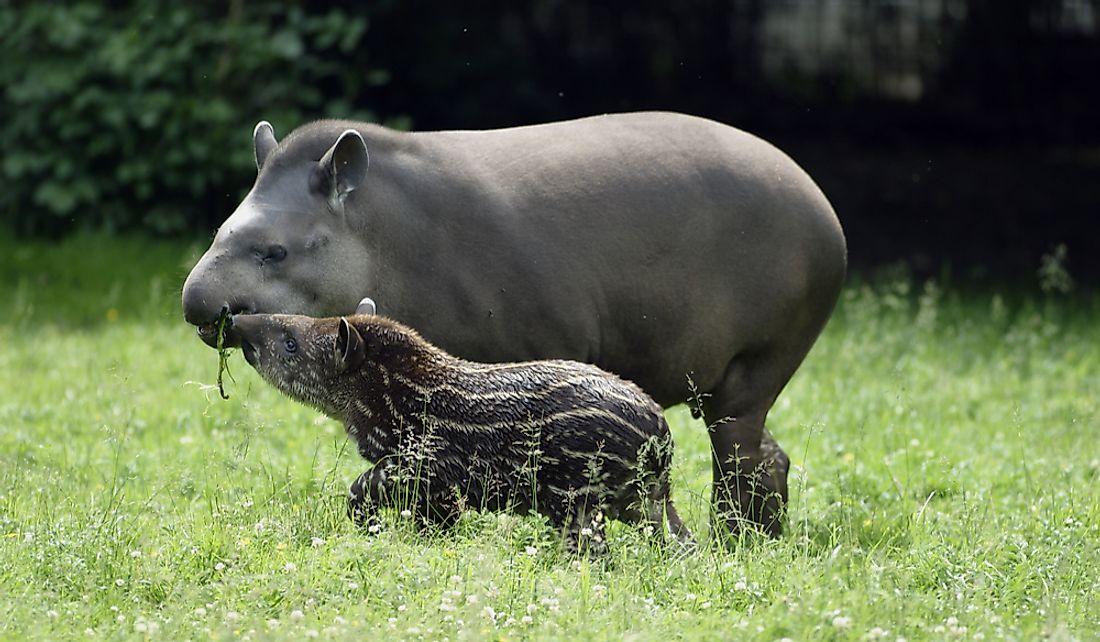Why Is The Brazilian Tapir A Threatened Species?

Tapirs are herbivorous mammals that closely resemble pigs in shape and have a short prehensile nose trunk. These mammal species are mainly found in South and Central America and Southeast Asia. There are five existing species of tapirs, four of which have been evaluated and listed as Endangered or Vulnerable. The Brazilian tapir, also known by several other names including the Amazonian tapir, South American tapir, lowland tapir, and maned tapir, is the Amazon’s largest living native land mammals. It has been classified as Vulnerable on the IUCN Red List mainly because of the rapid decline in its population due to hunting and habitat loss.
General Description
The size of the Brazilian tapir varies but it can grow to a length of about 8 feet while the tail can grow up to 4 inches. Its average weight is about 496 pounds. Some species have been reported to weigh up to 710 pounds. The South American tapir is dark brown in color and has a paler face. It has a low erect crest that runs which runs from the crown to the back of the neck. Like the other four species, this species also has a flexible proboscis and three hooves on back feet and four hooves on the front limbs.
Distribution
The South American tapirs are mainly found near the water in South America’s Amazon Rainforest. The species’ range covers an extensive territory in northern and central South America down to northern Argentina. While the Brazilian tapir has an extensive range, the ongoing rapid deforestation has placed an increased threat of extinction to the species.
Conservation Status
Although the Brazilian tapir was designated as endangered by the US Fish and Wildlife Service in June 1970, the species was classified as Vulnerable by the IUCN for the first time in 2000 due to the rapidly declining population. The major cause of population decline is habitat loss and widespread poaching. The current rate of decline is expected to increase in the next 30 years if necessary measures are not put in place. Although only about 20% of the Amazon has been affected by deforestation, almost 90% of the Atlantic forests have disappeared, some of which have been converted to human settlements. The decline in forest cover has forced the Brazilian tapirs to move to other places where they have been exposed to illegal hunting. Subsistence hunting and increased demand for bushmeat have contributed to further decline. The Brazilian tapir is considered an alternative source of leather for the shoemaking industry. Due to the declining population, the species is now severely fragmented or completely absent across some of its historical ranges. However, despite the threats and current decline rate, the Brazilian tapir is at lower risk of extinction compared to the other species of tapir.











